Before we approached the box office to pick up our tickets, we walked by the Festival's Main Street office, which functioned like a tourist office. There was a small scaled but wonderful costume display - those used in last season:

The three theaters were next to one another and in the middle of this complex, there is a sunken square, which was used for a "Green Performance" on every theater night, usually showcasing local or visiting bands and troupes. One of the nights we saw a wonderful Flamenco sangs and dances.
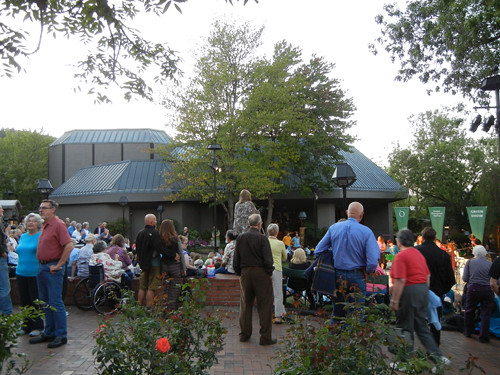
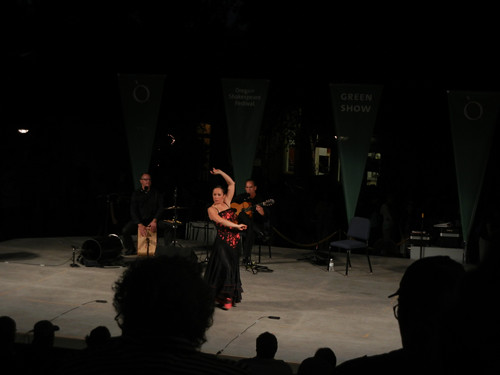
Our first play, Imaginary Invalid, was not by Shakespeare but Molière - a typical early French court farce. Unfortunately, the "adopters" and director turned it into a physical slapstick. Beyond that, they managed to inject some body function jokes, in block letters, what Molière hinted at, therefore relieving the imagination requirement from the audience, hence robbed the audience's realization process, which would be more engaging than force feeding. Worst of all, they invented some physical deformities for the sake of laughing at these deformities most cruelly. I had described this play in my previously blog extensively and my curious readers can find my vent there: Illusion versus Reality, From Bake Sale in Berkeley to Molière at Oregon Shakespeare Festival.
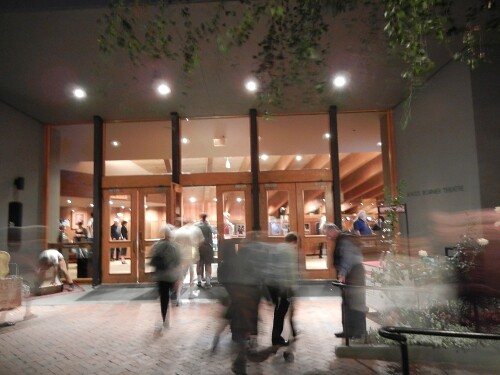
Angus Bowmer Theatre, where Molièr's Imaginary Invalid was played
Next day, we are to see Shakespeare's Henry IV, Part 2 in the Elizabethan Theater. The theater was open during the day and we entered onto the balcony, while the backstage tour participants were in the orchestra seats listening to the tour guide.
The corridor of the theater had a good view of the hills in the distance but it was the inside of the theater which provided most fascinating view, with its Tudor style half-timbered structures behind the thrust stage. In contrast to the Elizabethan Globe Theatre in London, the stage in Ashland is below the sight line, instead of higher than the center. In the Globe, the middle of the theater was for standing audience only while the one in Ashland was furnished with seats. However, that was just details. The spirit was obviously Elizabethan or "Jamesian" (since Shakespeare wrote most his plays in the period when James I was reigning England, succeeding Elizabeth I).
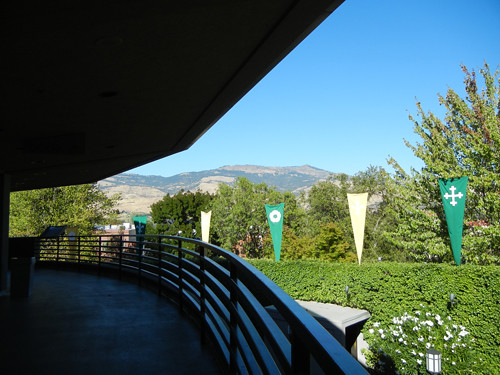
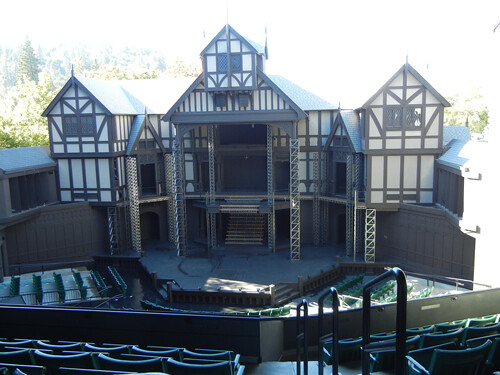
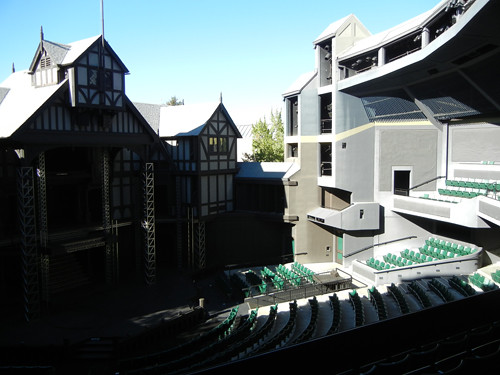
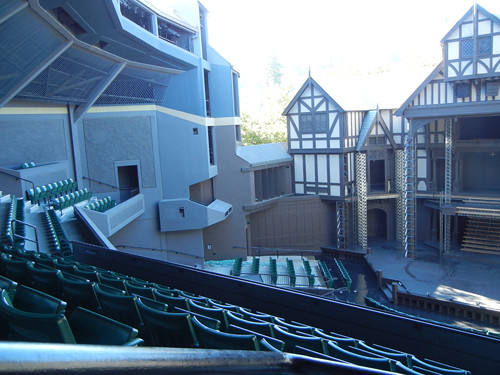
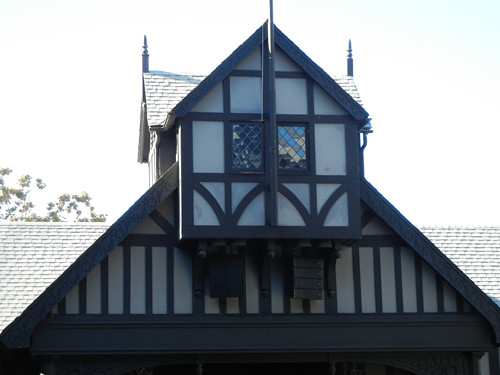
At night, the theater looked really magical, with the starry night above the opening sky. Shakespeare's famous play was a difficult one to follow and stage, despite the moving scene of the reconciliation between Henry IV and Prince Hal, and the enormously popular Sir John Falstaff. The distance of the English history and unfamiliarity of the Elizabethan vulgar expressions contributed to the issues, and that, I suspect, goaded the creative team in Ashland to ham up the rustic and sexual innuendos. But it was a necessary compromise, since we otherwise simply would fail to respond. Rougher than it should be but definitely less awful than the previous night. Prince Harry was good, so was Falstaff and the King was quite excellent.
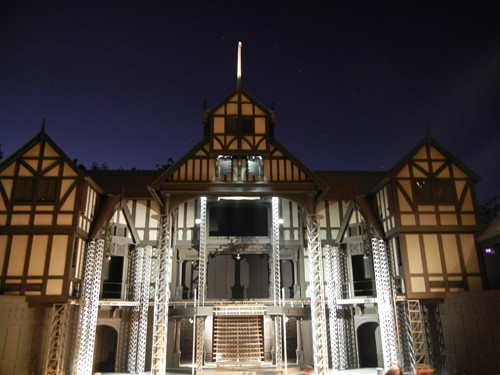
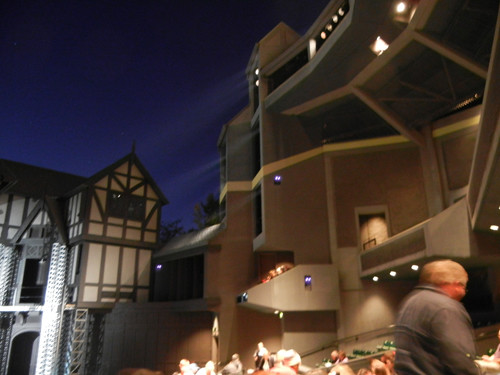
The last of our three plays was the very familiar Julius Caesar in the New Theater, a small arena style space, without the fourth wall.
Before the show, the stage was set at the entrance and the lobby, with picture posters of many assassinated political figures, and quotations for and against them on two sides of the posters.
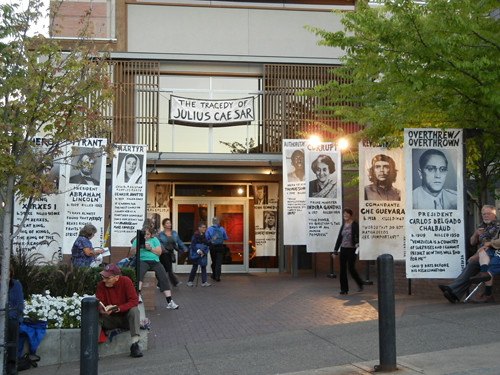
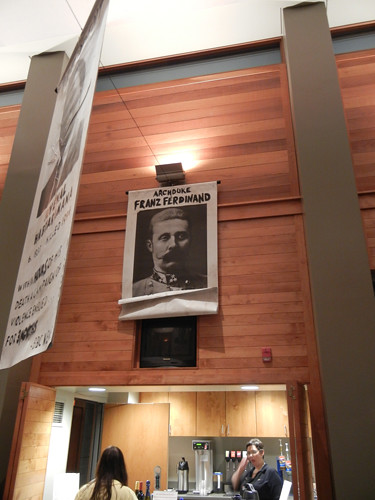
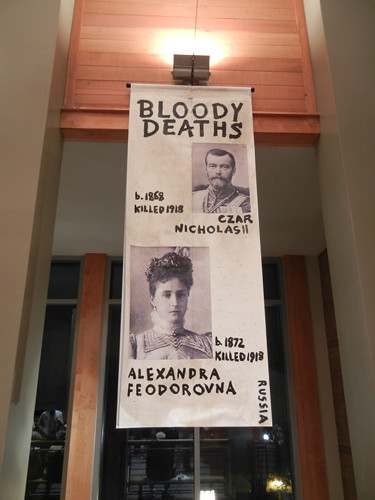
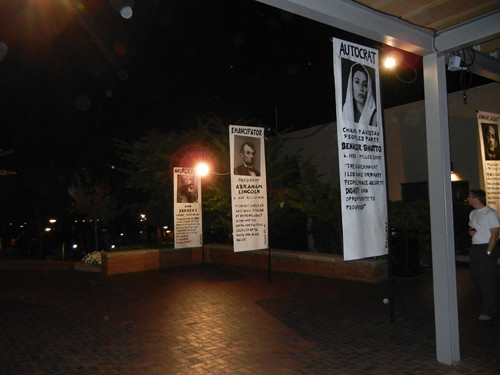
Once inside, we saw actors in modern dress roaming around in the center of the "arena" freely and chatted with audience. Then the actress Vilma Silva introduced herself as the one to play Caesar and invited the audience to cheer whenever she raised her arms in triumphant V. It was a very bloody, brutal and in-your-face production. The ghost of Caesar became omnipresent after his/her murder. It was a viscerally exciting production and had good performances from the cast.
I wondered if it was gimmicky to have a female actor play Caesar, or have the soothsayer speaking Japanese. However, the performances won me over. Considering those posters featuring assassinated from all over the world, it was apparent that the producer wanted to present this as a universal statement and summary. Granting that we have long been accustomed to have black or Asian actors playing white characters or vice versa, only a female Caesar could take us out of the preconception that we were watching that particular character, Julius Caesar. People could argue if this was necessary or not. But as presented from this particular angle, it worked exceedingly well.
After the show, we walked by a window display of the history of the Festival and its theaters:
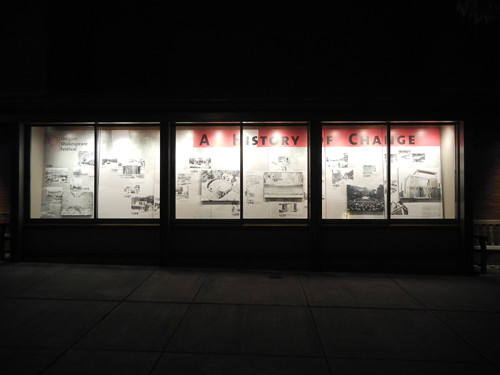
Three very different plays, three theaters, three styles. It did get better.
Related articles:
--> Coastal Northern California and Wine Country - Oregon Trip, Part 11 (The End)
--> Arcata, California - Oregon Trip, Part 10
--> Idyllic Parks and Cute Animals in Ashland - Oregon Trip, Part 9
--> Art in Ashland - Oregon Trip, Part 8
--> Natural Bridge and Crater Lake, Oregon - Oregon Trip, Part7
--> It Got Better - Three Plays at Oregon Shakespeare Festival - Oregon Trip, Part 6
--> Ashland Springs Hotel - Oregon Trip, Part 5
--> Ashland, Oregon - Oregon Trip, Part 4
--> A Night at McCloud, California - Oregon Trip, Part 3
--> Burney Falls in McArthur-Burney Falls Memorial State Park, Shasta County, California - Oregan Trip, Part 2
--> Sundial Bridge at Turtle Bay, Redding, California - Oregon Trip, Part 1





No comments:
Post a Comment